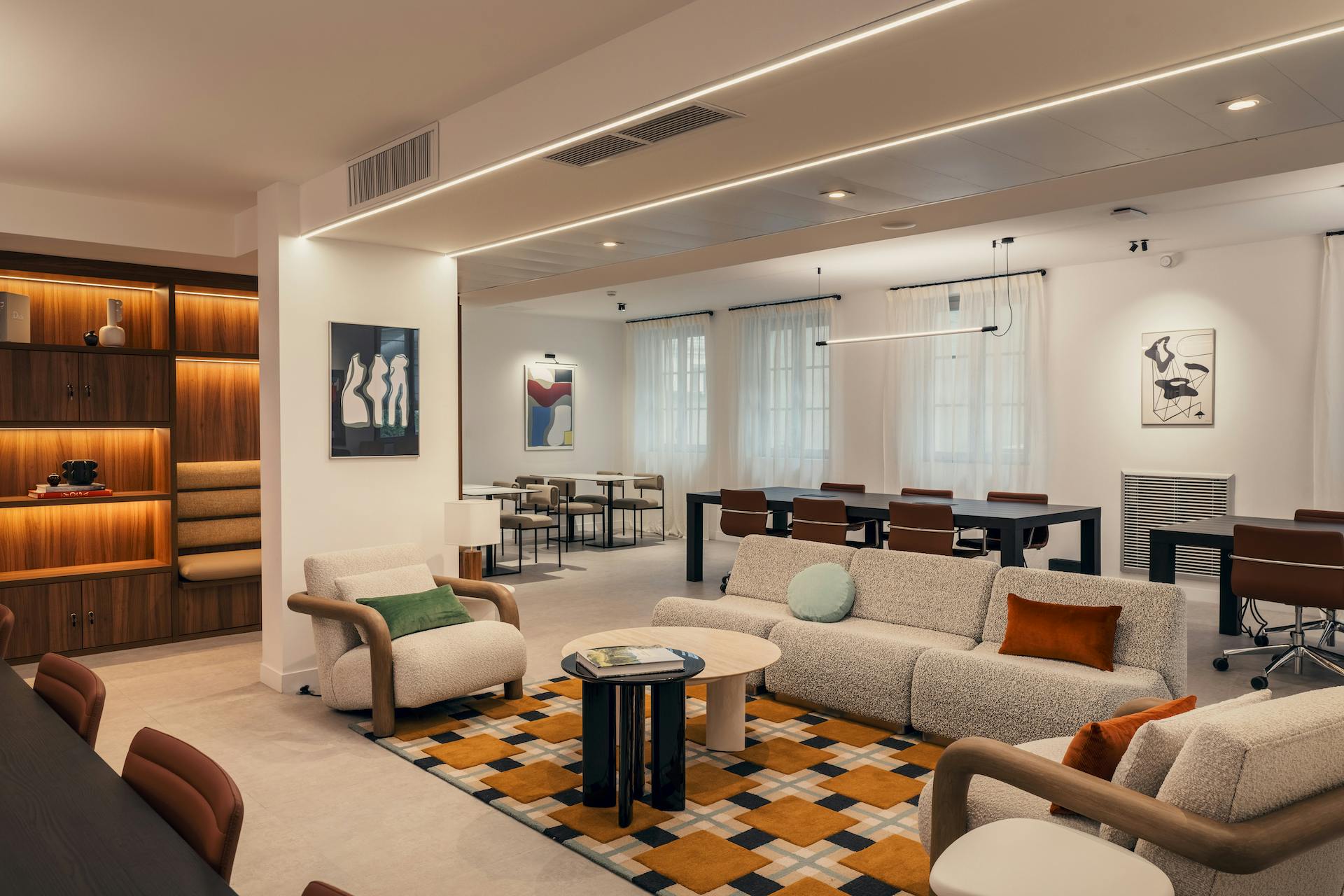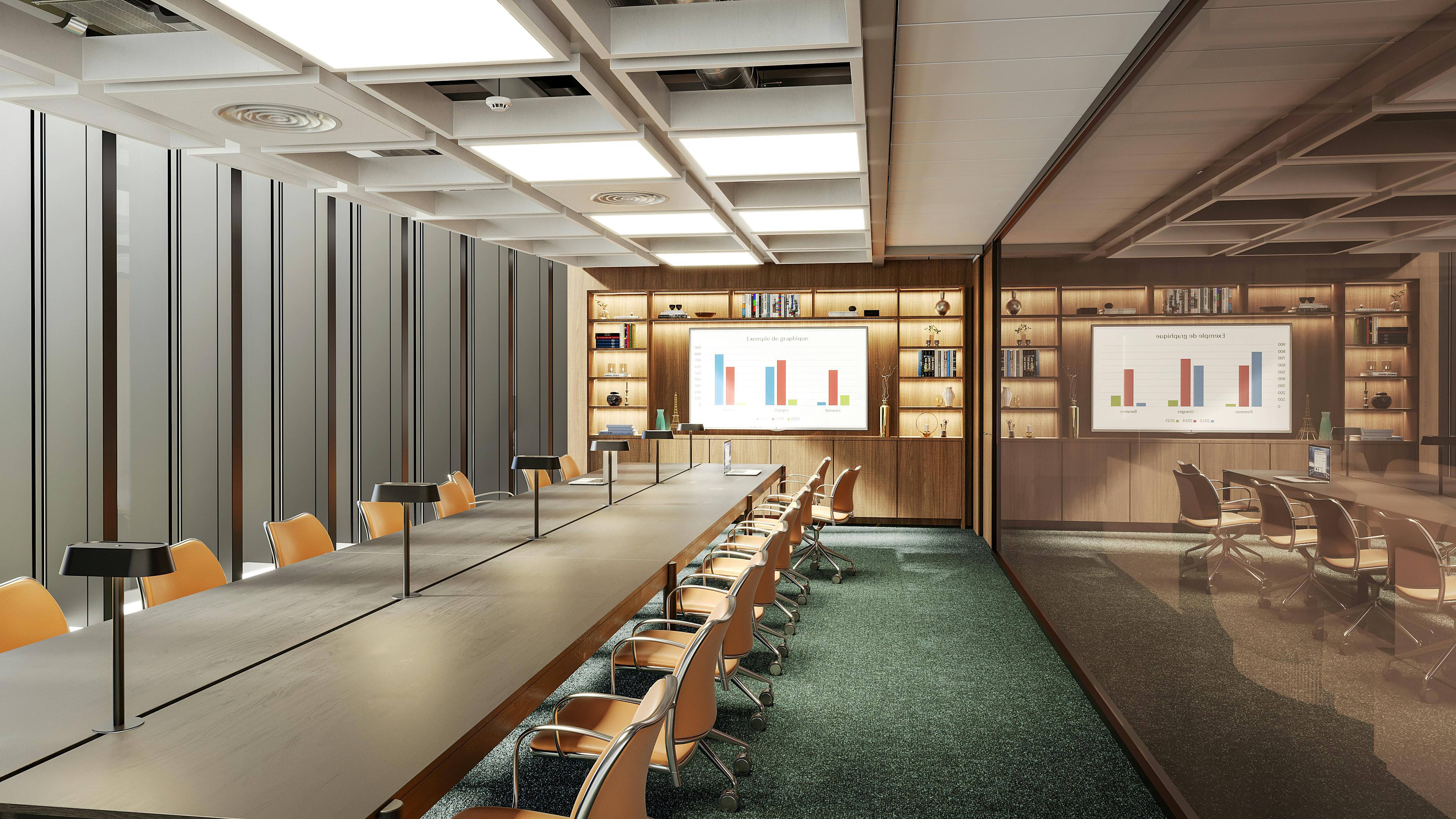

The Future of Work by PERIAL Asset Management

For the first time, we turn to the investors and not the users to hear their vision of the current crisis as an accelerator of an inevitable change in the tertiary sector. Benjamin Teboul meets Loïc Hervé, Deputy Managing Director at Perial Asset Management.
We are witnessing a revolution in the service sector, accelerated by the health crisis. How can real estate become a service industry?
How do you get employees back to the office after the crisis and how do you give them meaning? Real estate as a service is becoming fundamental to solving this equation. Clearly today, the building must offer a large volume of services both internally and externally, with a porous environment. Today's users prefer mixed-use areas with offices but also residential and commercial zones; an ecosystem that allows them to flourish.
Can you tell us about the importance of the social and societal dimension of the office?
Before the crisis, the social dimension of the office had probably been forgotten and the crisis has brought it to the fore. In itself this is positive. We understand that the workplace is not just about the company's strategy but also about socialising and meeting people.
Through the very essence of the office it is an inclusive real estate, which allows employees, whatever their social class, origin, generation, to meet. What is the place that allows all this to happen in a somewhat fractured society that is turning in on itself? The office is an extraordinary democratic tool, which has a fundamental dimension that goes beyond the development of the company's strategy.
Perial moved its offices to the 17th district a few months ago. Can you describe your offices to us?
The offices meet environmental criteria (energy-efficient building), flexibility in the layout, and the mix of services within the building and its environment (residential, retail and offices). This last criterion is essential in the war for talent. We wanted a building with many services for the well-being of users (sports rooms, cafeteria, bicycle room and lift, etc.).
Moreover, it is the first building in France to be awarded the "cycling score" gold level label to promote this approach to soft mobility such as cycling.
There are also many collaborative spaces to encourage serendipity and creativity.
The covid has not had an impact on the layout and has instead helped to digitalise the activities.
What impact has the crisis had on commercial property? Are we seeing a reduction in office space or a different use of sqm?
Indeed, the question cannot be considered from the simple angle of the reduction of sqm . There is no mathematical correlation between 1.5 days of teleworking and -20% of surface area. This is not true because it is necessary to allow teams to meet, so we have a multiplication of meeting places, informal places etc. By definition, you need space to create these places.
The second point brought about by the crisis is a halt to optimisation exacerbated by the users. We had reached an extreme with certain models that advocated 5 sqm per user. This is no longer viable in terms of well-being and real health issues. Ipsos surveys show that the ideal size is between 1 day and 1.5 days of TT, so there is not much impact on the organisation and use of offices.
3 days of telework raises other questions such as the home office. It is clear that 1 to 1.5 days can be absorbed by the employees; on the other hand, 2-3 days raise real questions about living spaces that were not designed for working in and there is a profound inequality in the quality of accommodation. I think that the third place in the vicinity, to make up for this difficulty of having an unsuitable workplace through the home, is going to be something that will develop in the coming years.
In recent years there has been a revolution in the use of buildings. On the other hand, the methods of valuing buildings have not been called into question. How can these new uses be brought together with the methods of property valuation that will have to take account of this evolution?
Two issues that we have to navigate today. The grail for an investor is to capitalise on a firm 12-year face rent and the grail for a user is to have flexibility. How do you reconcile the two? Long-term contracts work very well in the strategy of large corporate groups, albeit with some flexibility such as flexi-leasing for example. We are more inclined to find tailor-made solutions with the users.
We can also see today that subleasing is developing significantly. There is an undeniable demand for flexibility in the life of a rental contract.
Coworking and corpoworking bring service and well-being and have made many companies integrate these criteria into their planning.
Intermediation in our real estate chain raises questions because there are many intermediaries (owners, facility managers, property managers, etc.). We need to work together to use the vision of the ultimate client, the user. The vision is too B2B and not enough B2B2C.
Tell us about Perial's acquisitions and how the typology of the buildings reflects the changes?
Each asset that enters the Perial AM portfolio is screened against 60 ESG criteria during the due diligence phase. This year, we plan to make 1 billion investments. We have to make sure that the buildings are structurally sound and that they are resilient from an environmental and usage point of view. A very demanding and ambitious reading grid when the assets are acquired, and then the work with the users is put in place to constantly improve the quality of the assets.
Are you seeing a change in the importance of office location for users?
The revolution was already underway before the crisis, but the crisis is accelerating the divide between the two worlds of office property:
- The one that is very popular: the mixed-use building, in an urban centre, serviced and open to its environment, connected to clean transport
- On the other side: the building that has significant defects, that does not meet the demands of young workers, with distant destinations that are poorly served without any services. This no longer works and it will be the responsibility of the owners to transform these operations to meet the new needs in these areas.
The work with local authorities will be fundamental in the years to come.


Contact Us
We find your Perfect fit!
